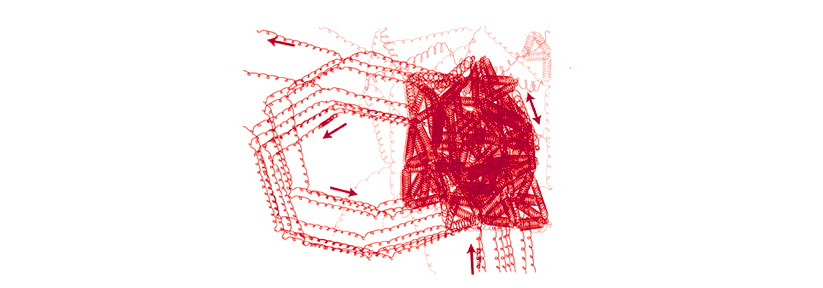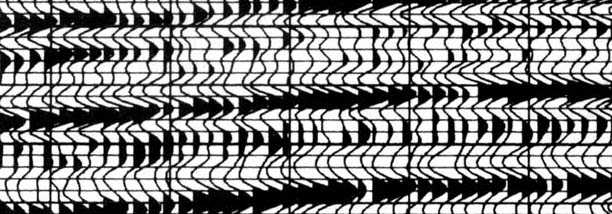According to the liberal tradition, the modern individual, at home in its private spaces, regards the public as its outside. The outside is the place proper to politics, where the action of the individual is exposed in the presence of others and there seeks recognition. (This is the notion of the political elaborated by Hannah Arendt in The Human Condition, which she calls the space of public appearance
Public space is civic space. It is the space of civil society, shared by citizens -- individuals who have aquired a public voice and understand themselves to be part of a wider community.
theory
qualitative/quantitative
...the qualitative is expressed in our concepts of reality and value. The Aristotelian universe was one in which qualities were primary. They were ontologically primary and indestructible. Qualities constituted an individual material body or substance when imposed on some portion of omnipresent neutral matter. (this is the hylomorphic model -- see form / matter. ) Aristotle sought to describe change-of-quality in general -- including both the fall of a stone and the growth of a child to adulthood.
Read Morereal time
The ironic nature of this concept is that real time is human subjective time. When we do not notice lags in communication, calculation, etc., we currently use the expression "in real time". But the reality of this time is simply a function of our motor habits, of the brief but real lags in our sensory systems, in our perceptions and neural activity.
Read Morereentry

For Gerald Edelman, reentry is the unique feature of higher brains. It is an ongoing recursive, and massively parallel process of signalling back and forth along reciprocal connections in the brain which integrates the various functionally segregated properties of brain areas despite the lack of a central coordinative area. One striking consequence of reentry is the widespread synchronization of activity of different groups of active neurons. Edelman compares the interconnections of functional clusters in the brain to a network of coupled springs, which propagate any perturbation throughout the system. This is the essential contemporary image: the rhizome, the network -- Empire.
Read Moreresonance
Resonance: when waves resonate, their amplitudes pile up on top of each other, as opposed to interference, which reduces their amplitudes.
A feedback loop creates a resonance that grows without bound.
The Desana Indians of Columbia describe the sky as a brain, its two hemispheres divided by the Milky Way. Their brains, they say, are in resonance with the sky. This integrates them into the world and gives them a sense of their role in the cosmos.
The qualitative aspects of pleasure have been difficult to formulate for psychoanalysis, which uses the "hydraulic" model of tension and release. Hans Loewald suggests that "resonance" between systems of psychic organization, (love, for example) forms of "hypercathexis," might help understand the pleasure in higher organization and unpleasure in less or lower organization -- of the exitation inherent in living substance. (this is similar to Kant's philosophical pleasures -- see critique of judgement )
Ilya Prigogine and Isabelle Stengers talk about the resonance between theological discourse and theoretical and experimental activity in the success of the clock metaphor of the universe. Gilles Deleuze proposes that "philosophy, art, and science come into relations of mutual resonance and exchange, but always for internal reasons." For Deleuze and Guattari, the interaction of actual and virtual is a resonance.
For Deleuze, "the central state is constituted ..by the organization of resonance among centers." (Thousand Plateaus, p.211) "a central computing eye scanning all of the radii."
Rupert Sheldrake believes that morphogenetic events resonate with each other, that it becomes progressively easier for a particular form to occur as its occurrences accumulate. He cites the formation of crystals as an example, in which occurrences of a new cristalline form seem to occur shortly after a first one is observed, in places with no direct relation to the first occurrence. For Sheldrake the probability of the new form occurring increases rapidly with each occurrence, starting with the first.
One wonders, however, why Chinese isn't easier to learn if so many people speak it.
ressentiment
ressenti(e) is the past participle of the French verb, ressentir, and ressentiment is the noun form. NIetzche makes use of ressentiment constantly, in his own singular fashion, to describe the phenomenon whereby an active force is deprived of its normal conditions of existence, where it directs itself inward and turns against itself. "Pushed back and repressed, incarcerated within and finally able to discharge and vent only on itself." is the perfect definition of what is meant for something to be ressenti according to Nietzche's concept of ressentiment. In his Nietzche and Philosophy, Deleuze defines ressentiment as the becoming reactive of force in general. "separated from what it is capable of, the active force does not how ever cease to exist. Turning against itself, it produces suffering." Hence, Deleuze concludes, with ressentiment a new meaning and depth is created for suffering, an intimate, internal meaning. (Anti-Oedipus, translator's note p. 214)
Read MoreRhizome
The Rhizome is one of a panoply of concepts that Deleuze and Guattari deploy in A Thousand Plateaus to describe the dynamics of their nomadology. While they reject binarism, which they consider to be founded on the transcendence of the one, many of Deleuze and Guattari's concepts are detailed "in contrast to".
Read MoreRepresentation
Representation becomes a central issue in all theories of knowledge, whether realistic or idealistic, that start from the mind to go out to the world, rather than the other way around. In Bergson's phrase, all perceptions become "veridical hallucinations." (Matter and Memory, p. 68) In The Order of Things, Michel Foucault traces a sequence of epistemes, of relations between signifier and signified. According to Foucault, the preclassical relation was a "natural" one. To search for meaning within this episteme is to "bring to light a ressemblance." In the classical episteme , signifier and signified are no longer linked through analogy or similarity, but through representation. "Representation, therefore, does not belong to the natural order, but has its origins in convention: the sign becomes, in short, an instrument of the analytically controlled use of reason, of knowledge." In the 17th and 18th century vision of human thinking as representation, Reason represents that which Nature presents. The idea that the basic function of Reason is the representation of what is presented by Nature resulted in the metaphor of Reason as the mirror reflecting the light of Nature.
Read Moreruins of representation

"Of Exactitude in Science"
...In that Empire, the craft of Cartography attained such perfection that the Map of a Single province covered the space of an entire City, and the Map of the Empire itself an entire Province. In the course of Time, these Extensive maps were found somehow wanting, and so the College of Cartographers evolved a Map of the Empire that was of the same Scale as the Empire and that coincided with it point for point. Less attentive to the Study of Cartography, succeeding Generations came to judge a map of such Magnitude cumbersome, and, not without Irreverence, they abandoned it to the Rigors of sun and Rain. In the western Deserts, tattered Fragments of the Map are still to be found, Sheltering an occasional Beast or beggar; in the whole Nation, no other relic is left of the Discipline of Geography.
From Travels of Praiseworthy Men (1958)
J. A. Suarez Miranda
schismogenesis
Gregory Bateson uses this term to describe progressive differentiation between social groups or individuals. For example, if two groups exhibit symmetrical behaviour patterns towards each other that are different from the patterns they exhibit within their respective groups, they can set up a feedback , or "vicious cycle" relation. For example, if boasting is the way they deal with the other group, and if the other group replies to boasting with more boasting, then each group will drive the other into excessive emphasis on the pattern, leading to more extreme rivalry, and ultimately to hostility and the breakdown of the system. (Steps towards an Ecology of Mind, p. 68) An arms race is another symmetrical form of schismogenesis.
sacred / profane
"Surrounded by a world full of wonder and vigour, whose laws man will never understand (though he may sense their existence and long to know them), a world which reaches him in a few interrupted chords that leave his soul unsatisfied, man conjures into being the perfection that he lacks, and, creating a miniature world where the cosmic laws, though restricted, may appear complete in themselves, he gratifies the cosmogonic instinct within him." (Gottfried Semper, Der Stil in den technischen und tektonishen K nsten.)
"During the Middle Ages, spatial relations tended to be organized as symbols and values. The highest object in the city was the church spire, which pointed toward heaven and dominated all the lesser buildings, as the church dominated their hopes and fears." (Mumford, "the Monastery and the Clock"
Mircea Eliade locates the primary spatializing impulse of architecture the demarcation of sacred from profane. He studies sacred space and the ritual building of human habitation as parts of the modality of sacred experience. For Eliade, the sacred and the profane are two modalities of experience, each with its own world. The former experience takes place in a sacralized cosmos, while the latter desacralizes the world in order to assume a profane existence. An echo of this distinction is to be found in the relationship between philosophy and poetry. (see truth )
In Homo Ludens, Johan Huizinga, linking play to ritual, also emphasizes spatial separation from everyday life. (In a structuralist perspective, play and ritual are inverses of each other. eg. see time)
Read Morescience
"Science is any attempt to bring facts into logical order". B. Bavink (see explain / describe )
"Science is concerned with the formal correlation of properties, and with the development of theoretical constructs that most parsimoniously and usefully describe all known aspects of that correlation, without exception." (Edelman, p.138)
self-organization

Self-organizing systems aquire new structure without specific interference from the outside. They exhibit qualitative macroscopic changes such as bifurcations or phase transitions. Stuart Kaufman calls this " Order for Free."Self-organization is the capacity of a field to generate patterns spontaneously, without any specific instructions. What exists in the field is a set of relationships among the components of the system such that the dynamically stable state into which it goes naturally -- what mathematicians call the generic (typical)) state of the system has spatial and temporal patterns. Fields of this type are now called excitable media. (see for example Belousov-Zhabotinsky reaction.)
Read MoreSensitivity to Intial conditions
Sensitivity to Initial Conditions: An extremely small change in the initial conditions of a chaotic or non-linear system leads to extremely differing results. Any arbitrarily small interval of initial values will be enlarged significantly by iteration. This is the so-called "butterfly effect" in which the flapping wings of a single butterfly could theoretically make the difference whether or not a hurricane occurred in another place and time. (The title of a paper by Edward N. Lorentz was "Can the flap of a butterfly's wing stir up a tornado in Texas?"
sexuality

In its current usage, sexuality refers to the cultural interpretation of the human body's erogenous zones and sexual capacities. That the same two sexes occur in every society is a matter of biology...that there is always sexuality, however, is a cultural matter. Sexuality is that complex of reactions, interpretations, definitions, prohibitions, and norms that is created and maintained by a given culture in response to the fact of the two biological sexes.
Read Moresex / gender
On ne nait pas femme; on le devient -- Simone de Beavoir
At its simplest, the distinction between sex and gender is between a physical difference and a cultural difference. Gender is the mapping of socially and ideologically important distinctions onto biological differences between the sexes. (see also sexuality.)
The distinction between sex and gender becomes important in arguments that lean towards social constructionism, in which gender is given more attention, and is presumably more open to change, than sex. Feminism asserts that gender is a fundamental category within which meaning and value are assigned to everything in the world, a way of organizing human social relations. In a further twist on the relation between culture and nature, Brian Massumi calls gendering the process by which a body is socially determined to be determined by biology.
Read Moresimple location
"The characteristic common to both space and time is that material can be said to be here in space and here in time, or here in space-time, in a perfectly definite sense which does not require for its explanation any reference to other regions of space-time." (p.49)
Read Moresimulacrum
In "The Structuralist Activity," of 1960, Roland Barthes defines structure as a simulacrum of the object in which something new occurs: the simulacrum is "intellect added to the object," making something appear which remained invisible, or if one prefers, unintelligible. For Barthes, "Structural man takes the real, decomposes it, then recomposes it."
Read Moresimulation
"Simulation of any system implies a mapping from observable aspects of the system to corresponding symbolic elements of the simulation." (H. H. Pattee, "Simulations, Realizations, and Theories of Life", in Artificial Life) For Pattee, realizations are functional replacements. They are judged primarily by how well they function as implementations of design specifications. (Thus a building would be the implementation of a blueprint)
Read Moresmooth/striated

In Mille Plateaus, Gilles Deleuze and Félix Guattari distinguish between two kinds of spaces: smooth space and striated space. This distinction coincides with the distinctions they draw between the nomadic and the sedentary, between the space of the war machine and the space of the state appparatus. According to Deleuze and Guattari, smooth space is occupied by intensities and events. It is haptic rather than optic, a vectorial space rather than a metrical one. Smooth space is characteristic of sea, steppe, ice and desert. It is occupied by packs and nomads. It is a texture of "traits" consisting of continuous variation of free action. The characteristic experience of smooth space is short term, up close, with no visual model for points of reference or invariant distances. Instead of the metrical forms of striated space, smooth space is made up of constantly changing orientation of nomads entertaining tactile relations among themselves.
Smooth does not mean homogeneous, however, but rather amorphous non-formal (cf formless) in fact, striation creates homogeneity. Homogeneity is the limit-form of a space striated everywhere and in all directions. According to Deleuze and Guattari, striation is negatively motivated by anxiety in the face of all that passes, flows, or varies and erects the constancy and eternity of an in-itelf. Thus A Thousand Plateaus recounts an "extended confrontation between the smooth and the striated in which the striated progressively took hold."